Every 25 seconds, a violent crime occurs in America. But here’s the good news: you don’t need years of training or expensive classes to protect yourself. These 15 self-defense moves require zero equipment and can be learned in a single evening.
Based on techniques recommended by certified Krav Maga instructors and self-defense experts, they focus on natural body movements that work regardless of your size or fitness level.
From awareness strategies that prevent attacks to effective strikes and escape techniques, you’ll gain practical skills that boost your confidence and safety immediately. Your personal protection plan starts tonight—right in your living room.
1. Cooper’s Color Code System

This mental awareness system, created by firearms expert Lt. Col. Jeff Cooper, divides alertness into four levels.
A four-tier mental framework that prepares you to respond to threats faster.
How it works:
- White: Completely unaware – like texting while walking or sleeping. You’re vulnerable.
- Yellow: Relaxed alertness – you’re aware of your surroundings while going about your day. This should be your default in public.
- Orange: Potential threat identified – something specific has caught your attention as unusual.
- Red: Threat confirmed – you’re mentally prepared to take defensive action.
Research shows people in White awareness take up to 3 seconds longer to react to threats – often too late. Maintaining Yellow awareness cuts reaction time dramatically.
During daily activities, consciously track your awareness level. While shopping, practice Yellow by noting exit locations, unusual behaviors, and maintaining space around you.
2. Baseline Establishment

A method to quickly identify potential threats by establishing what “normal” looks like in any environment.
How it works:
- When entering any space, take 10 seconds to observe the normal patterns.
- Note how people typically move, common behaviors, and environmental features.
- Stay alert for anything that breaks these established patterns.
Our brains naturally detect pattern disruptions, but we must first establish what’s normal to recognize threats early.
In public places, mentally note 3-5 “normal” behaviors. Then look for anomalies – someone moving against the flow, watching others instead of their destination, or displaying inappropriate emotions.
Practical examples:
- On public transit: Notice where people typically sit, how they interact.
- In parking lots: Observe typical walking paths and how people approach cars.
3. Palm Strike to Face
An open-handed strike using the heel of your palm instead of your fist.
How to execute:
- Start with hands up protecting your face.
- Extend your arm forward with fingers pointing up, wrist locked.
- Strike with the heel of your palm (the hard part where your wrist meets your palm).
- Aim for the nose, chin, or jaw.
- Pull back quickly to guard position.
Delivers significant impact without risking broken knuckles. The palm heel is much stronger than knuckles and harder to injure.
Start with slow-motion strikes in front of a mirror, focusing on form. Practice 20 repetitions daily, gradually increasing speed while maintaining proper wrist alignment.
4. Horizontal Elbow Strike

A powerful close-range strike using your elbow as the point of impact.
How to execute:
- Stand with feet shoulder-width apart, knees slightly bent.
- Bring your palm to opposite shoulder (right palm to left shoulder).
- Drive your elbow horizontally across your body with force.
- Rotate your hips for maximum power.
- Aim for attacker’s jaw, temple, or chest.
Generates tremendous force over a short distance. Your elbow is one of your hardest body parts, making it difficult for attackers to block or counter.
Practice slow-motion strikes first, focusing on hip rotation. Use a pillow as a target once comfortable with the motion.
5. Reverse Elbow Strike
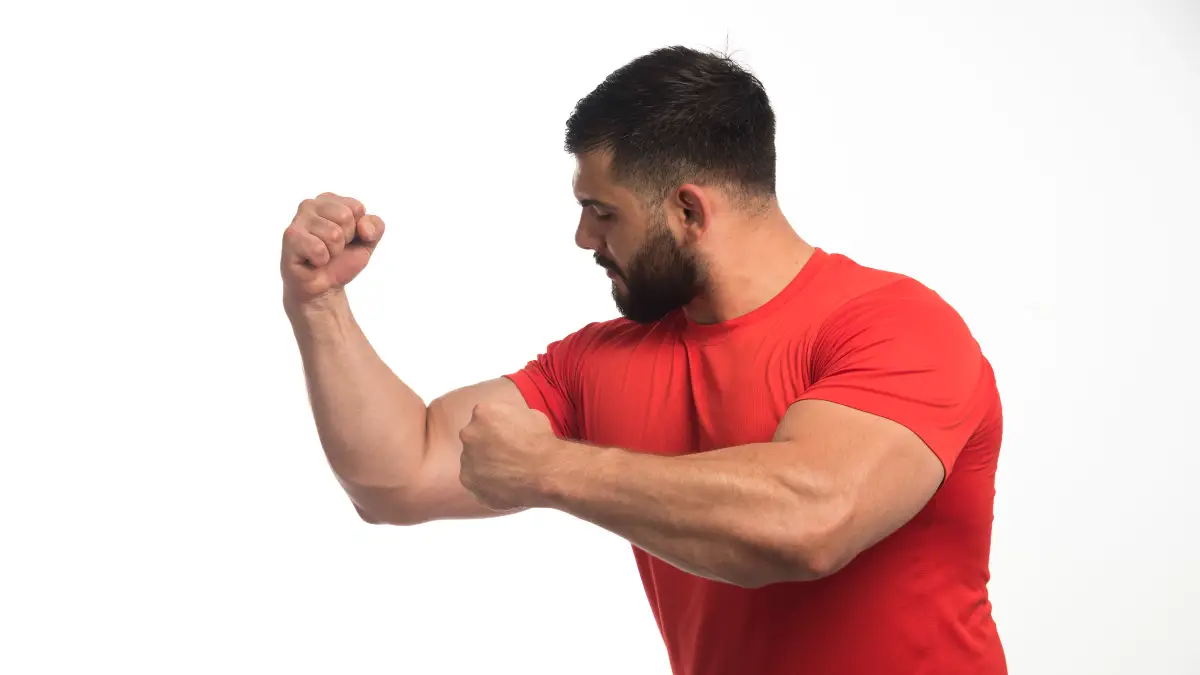
A backward elbow strike ideal for targets behind you or as a follow-up to the horizontal elbow.
How to execute:
- From your guard position, bend your arm with hand near your ear.
- Drive your elbow backward and slightly upward.
- Keep your forearm parallel to the ground.
- Follow through by rotating your shoulders.
Works in tight spaces when someone is close behind you. Creates space between you and the attacker.
Practice transitioning between horizontal and reverse elbow strikes, focusing on flowing between the techniques while maintaining balance.
6. Front Kick (Push Kick)
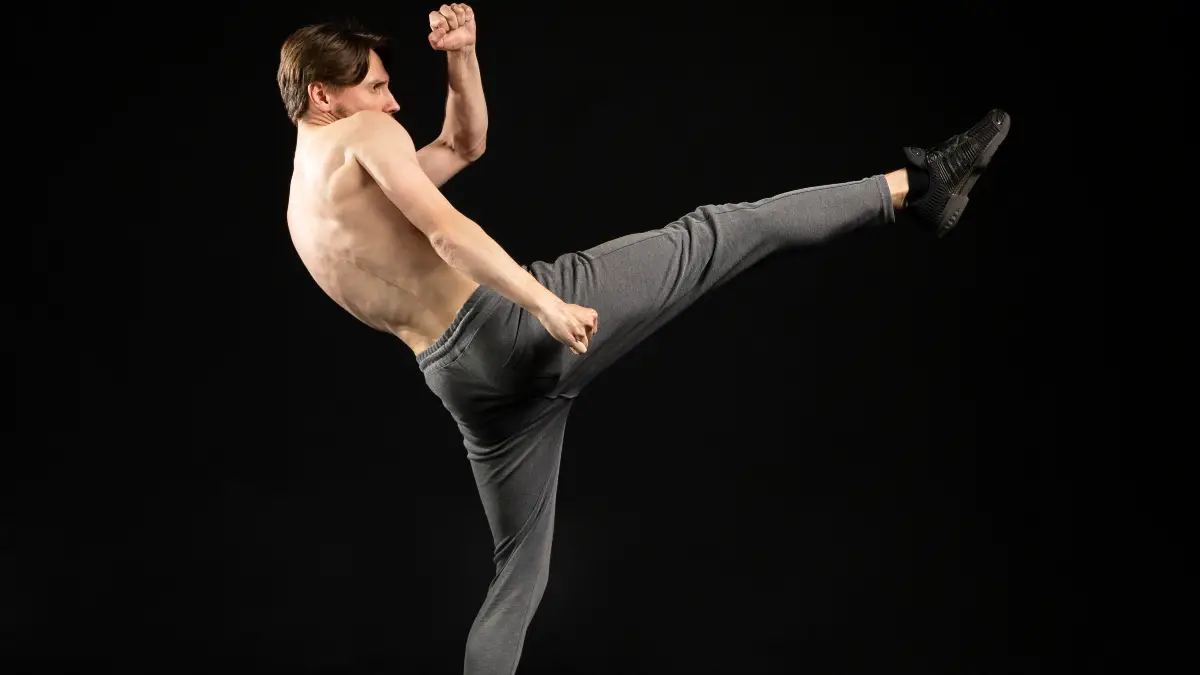
A straight kick that creates distance between you and an attacker.
How to execute:
- Start from your ready stance, hands up.
- Lift your knee toward your chest.
- Extend your foot forward, pushing with your heel or the ball of your foot.
- Aim for the attacker’s midsection or thighs.
- Quickly return to your ready stance.
As Aaron Swenson explains, “Legs are longer than arms, so you have longer striking range.” Creates distance for escape and can be surprisingly powerful.
Start by practicing the chamber position (knee up) while holding onto a chair for balance. Progress to slow extension, then gradually increase speed.
7. Knee Strike
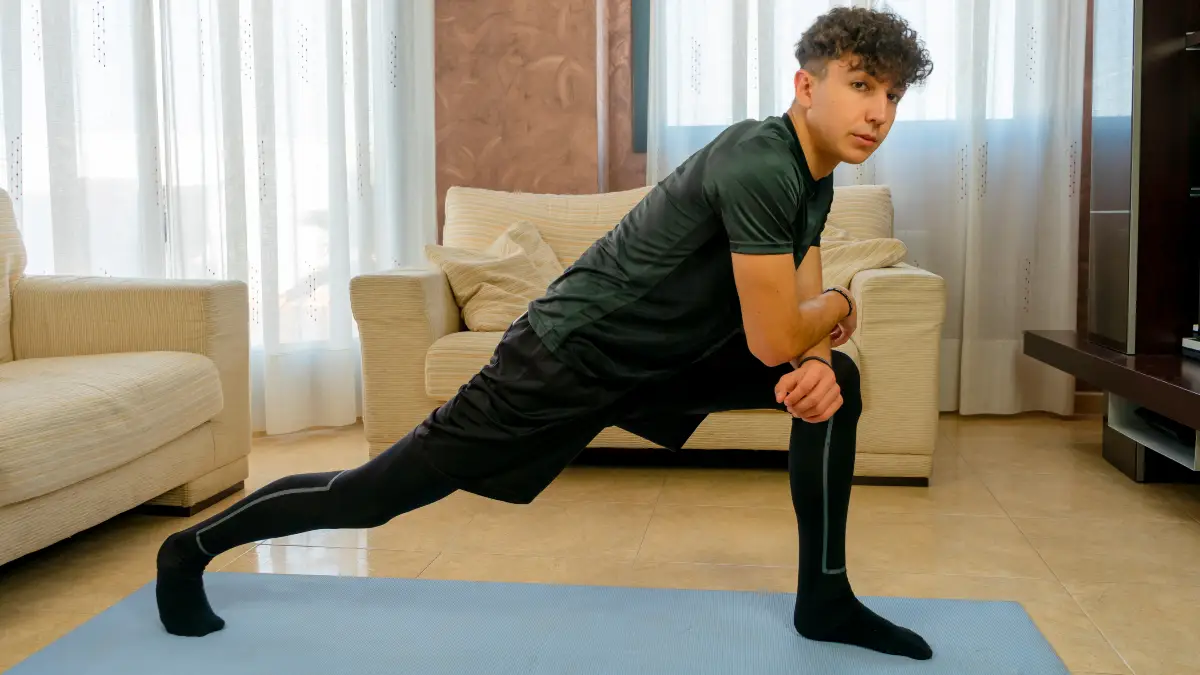
A devastating close-range strike using your knee.
How to execute:
- Grab attacker’s shoulders or back of neck (in practice, imagine this).
- Pull down while driving your knee upward.
- Use your hip to generate power.
- Aim for the groin, thigh, or midsection.
- Quickly return to your ready stance.
Generates tremendous power at very close range where other strikes are limited.
Practice the motion slowly without impact, focusing on balance. Use a pillow or cushion once comfortable with the technique.
Always start slow and focus on form over power during home practice.
8. Wrist Grab Escape (Thumb Technique)

A method to break free when someone grabs your wrist.
How to execute:
- Identify where the attacker’s thumb is (it’s the weakest part of their grip).
- Make a fist with your grabbed hand to strengthen your wrist.
- Rotate your arm toward their thumb side in a quick, sharp motion.
- Pull away while stepping back.
- Create distance once free.
Exploits the anatomical weakness in any grip – the space between thumb and fingers can’t maintain hold against rotational force.
Have a family member hold your wrist with light pressure, or use a resistance band looped around your wrist and practice the rotation and pull.
9. Two-Handed Wrist Break

A technique for escaping when someone grabs both your wrists.
How to execute:
- Form your hands into fists to strengthen your wrists.
- Bring both arms up in an explosive uppercut-like motion.
- At the apex of the motion, rotate your wrists outward (away from each other).
- Step backward as you execute to add momentum.
Uses leverage and body weight rather than arm strength to break the grip, making it effective even against stronger attackers.
Use resistance bands to simulate the hold or practice the motion without resistance, focusing on explosive movement and proper rotation.
10. Front Choke Defense
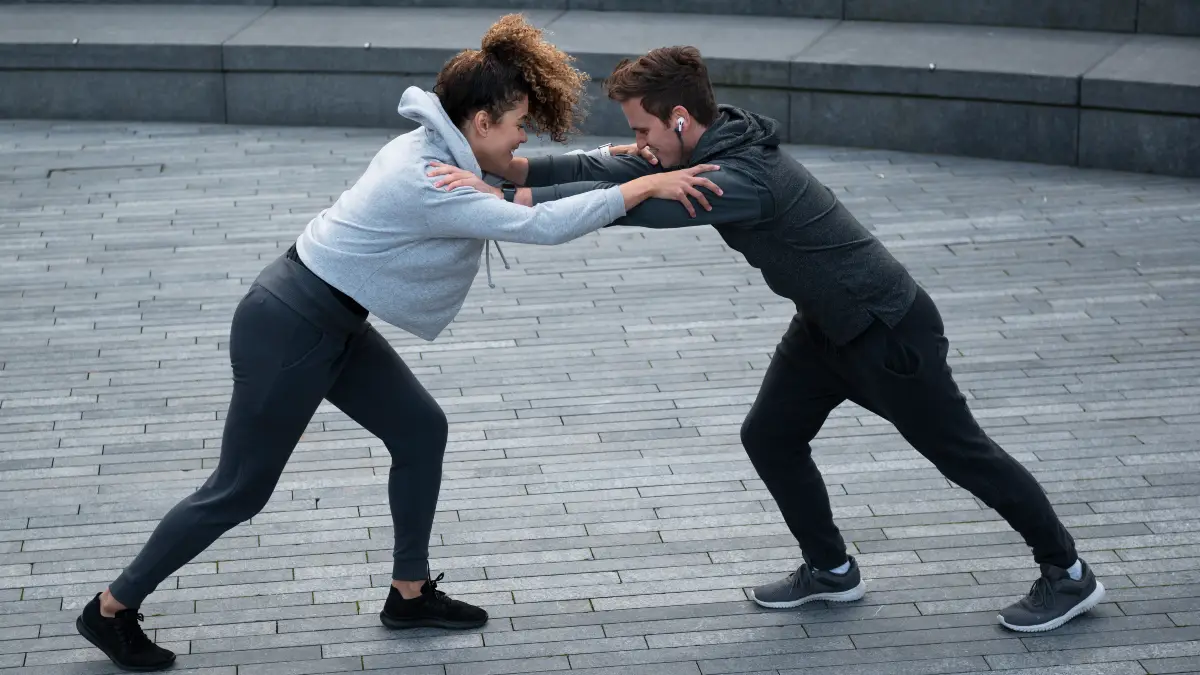
A technique to escape when someone chokes you from the front.
How to execute:
- Raise one arm straight up high.
- Turn your body to that same side while bringing your arm down hard across their arms.
- Use your entire body weight in the motion, not just arm strength.
- Once their grip breaks, create distance or follow up with a palm strike if necessary.
Uses whole-body movement to break the hold at its weakest point rather than trying to pull hands away directly.
Practice the motion VERY slowly with zero contact. Focus on the body turn and arm movement together.
11. Bear Hug Escape (Arms Free)

A technique to escape when someone bear hugs you but your arms remain outside the hug.
How to execute:
- Lower your center of gravity by bending your knees.
- Use your elbows to strike the attacker’s midsection.
- Simultaneously stomp on their foot or shin.
- As their grip loosens, turn your body to create space.
- Push away and create distance.
Attacks multiple vulnerable points simultaneously, making it difficult for the attacker to maintain their grip.
Practice the drop in center of gravity, elbow movement, and foot stomp as one fluid motion.
12. Technical Stand-Up
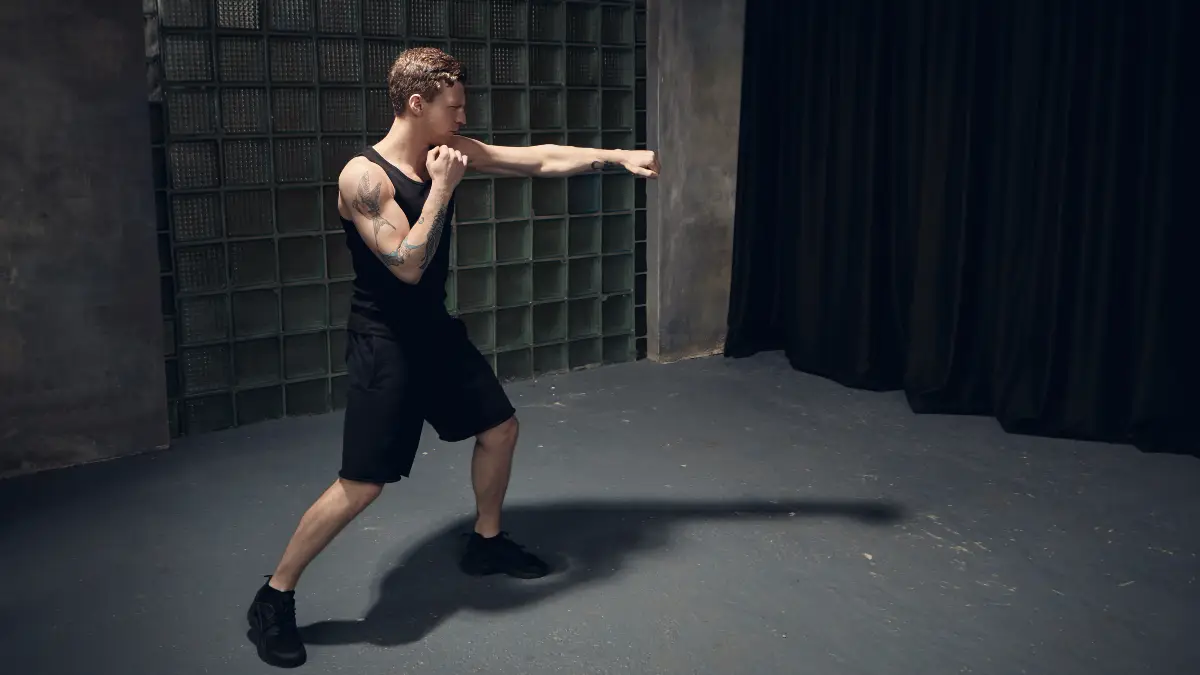
A method to safely return to your feet from the ground while maintaining visual contact with your attacker.
How to execute:
- From a seated position, place one hand on the ground behind you.
- Bring the same-side foot close to your body, foot flat on floor.
- Extend your other leg toward the threat as a barrier.
- Push off your grounded foot while using your posted hand for support.
- Swing your extended leg underneath, bringing you to a kneeling position.
- Stand up fully without ever taking your eyes off the threat.
Keeps your eyes on the threat while protecting your head throughout the motion. Maintains a defensive posture during your most vulnerable moments.
Start on a soft surface like a carpet or exercise mat. Practice the motion slowly at first, then build speed once comfortable.
13. Ground Defensive Position
A protective position to adopt when on your back, allowing you to defend against an attacker standing above you.
How to execute:
- Lie on your back with knees bent, feet flat on the floor.
- Raise your hands to protect your face.
- Keep your elbows in to protect your ribs.
- Use your legs as a barrier between you and the attacker.
- Be ready to kick at the attacker’s knees or groin if they approach.
Creates a defensive barrier using your strongest limbs (legs) while protecting your most vulnerable areas.
Practice on a soft surface, focusing on quickly assuming the position from different starting positions.
14. Bridge/Upa Escape

A technique to escape when pinned on your back with someone mounted on top of you.
How to execute:
- Trap one of the attacker’s arms (in practice, imagine this).
- Place your foot flat on the floor on the same side.
- Bridge your hips upward explosively.
- As your hips rise, turn to the side of the trapped arm.
- Continue the motion to roll the attacker off.
Uses your strongest muscles (hips and legs) to create momentum rather than trying to push with your arms.
Use a heavy pillow or cushion on your midsection to practice the bridging motion and turn.
15. 360-Degree Block
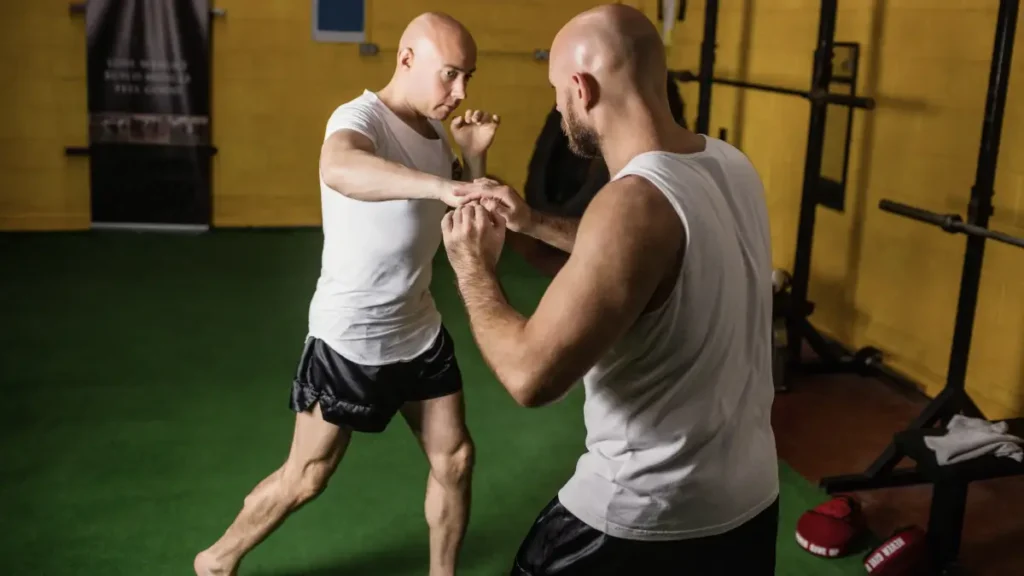
A simplified blocking system that works from any angle.
How to execute:
- Keep your arms bent at 90-degree angles, forearms vertical.
- Rotate your forearms outward to intercept strikes.
- Keep elbows close to your body.
- Move your entire body to support the block, turning toward the threat.
- After blocking, counter with a strike or create distance.
Provides a simple, versatile defense that works against many common attacks without requiring complex techniques.
Practice blocking motions from different angles, focusing on quick reactions and solid positioning.
The best self-defense is avoiding dangerous situations entirely. These techniques are meant as a last resort when prevention and awareness fail. Always practice safely, starting slowly and focusing on proper form before adding speed or power.


